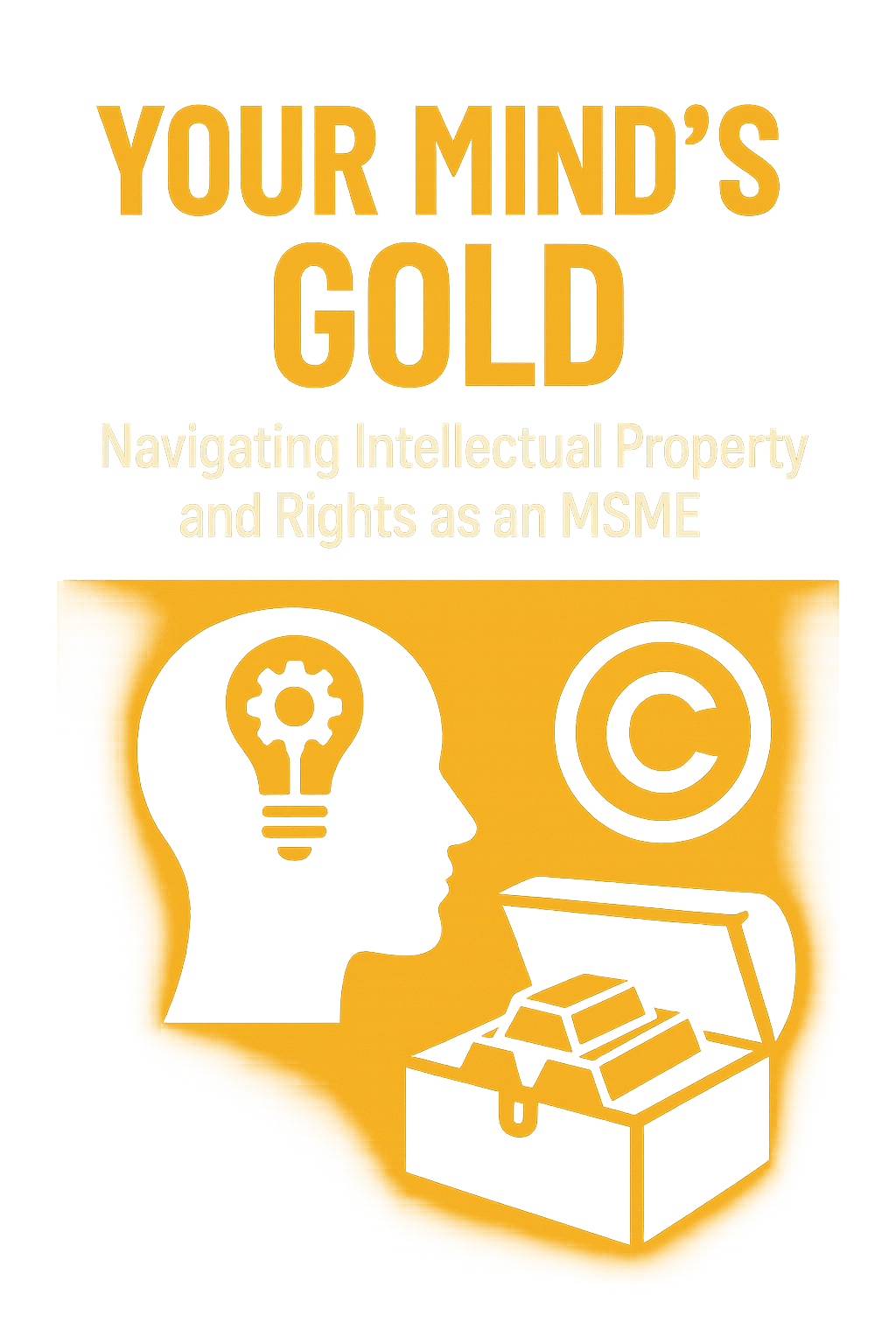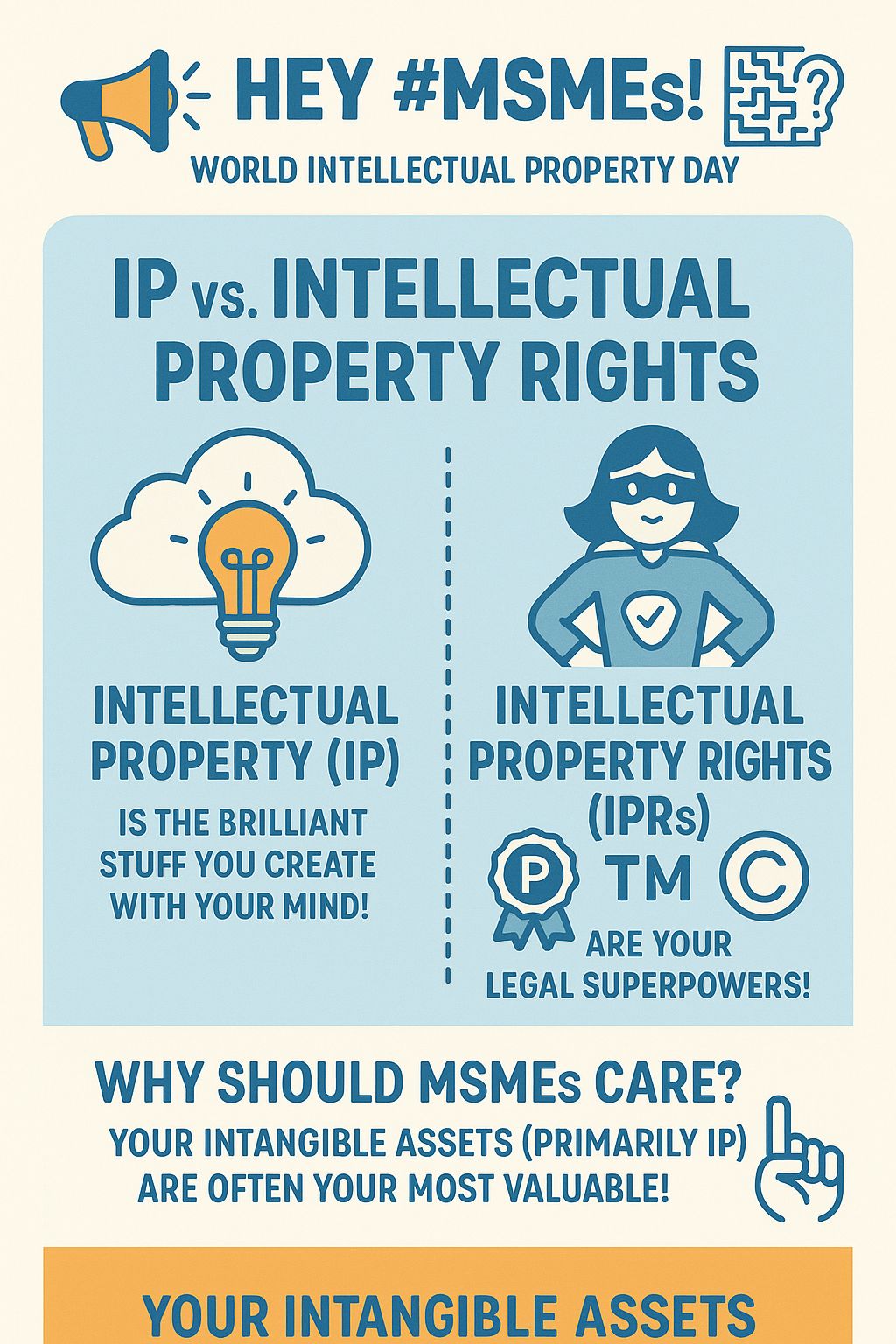- UandIP
- Posts
- Your Mind's Gold: Navigating Intellectual Property and Rights as an MSME
Your Mind's Gold: Navigating Intellectual Property and Rights as an MSME
Hello! Joining the 2025 World Micro, Small, and Medium Enterprises (MSME) Day celebrations, I'm thrilled to be able to share something with you today!

When we hear "Intellectual Property" (IP) it can often sound complex and perhaps even a bit daunting, especially for Micro, Small, and Medium-sized Enterprises (MSMEs). As we continue to celebrate the #2025WorldMSMEDay, let’s see how “Enhancing the role of Micro-, Small and Medium-sized Enterprises (MSMEs) as drivers of Sustainable Growth and Innovation” (this year’s theme) can be done with IP.
Before we move further, I want to emphasize, especially to those new in and with IP, that intellectual property is not something to be intimidated by, but rather something to embrace and leverage for growth and sustainability. For IP professionals, effective communication that highlights the accessibility and benefits of IP for this demographic is key.
Drawing on some insights, the goal is to make understanding IP less intimidating, especially for those just starting their journey. This conversation aims to make that initial step into the world of IP a bit easier.
The importance of both Intellectual Property (IP) and Intellectual Property Rights (IPRs) for MSMEs, whether they are just starting or already existing, cannot be overstated. In today's economy, intangible assets, primarily composed of IP, are increasingly becoming the cornerstone of innovation, creativity, and economic growth, often surpassing the value of physical assets. These aren't just abstract concepts; they are central to defining and safeguarding your competitive advantage.

Main differences of “IP” and “IPR” made simpler.
So, what exactly are we talking about when we say "Intellectual Property"? At its core, IP refers to creations of the mind. This includes your inventions, artistic works, designs, symbols, names, and images used in commerce. Think of it as the results of human intellect, the unique things you've actually made or designed, whether tangible like a product's unique shape, or intangible like a catchy brand name.
I, along with other IP practitioners, cannot stress this enough:
IP is the creation itself, not merely the underlying idea.
It's the better widget you designed, the software code you wrote, the brand logo you created, or even a secret manufacturing process. What ties all these diverse elements together is that they are unique creations born from intellectual effort and, crucially, they have value. This value lies in setting you apart from competitors, protecting your innovation, or being something you can actually commercialize.
Now, where do Intellectual Property Rights (IPRs) come into play? IPRs are the legal mechanisms, the set of exclusive rights granted by law (usually by the government) to the creators or owners of that IP. They are like legal protections that give you enforceable rights over your creation.
Think of it as putting a legal fence around your IP. For instance, if you invent that better widget and obtain a patent, the patent is the IPR that gives you the legal right to stop others from making, using, or selling your specific invention without your permission. Similarly, if you write a novel, the story and words are the IP, and the copyright you obtain is the IPR that prevents others from copying and selling your book. The IP is the intangible creative product; the IPR is the legal tool that grants you exclusivity and control over it.
The fundamental purpose of these rights is to encourage people to invest time, effort, and money in creating and innovating. By giving creators the chance to benefit from their work, IPRs fuel progress and provide an incentive for further creativity. These rights come in different forms, mainly patents for inventions, trademarks for branding, copyrights for artistic and literary works, and protection for trade secrets.
While the concept of IP is recognized globally, it's crucial to understand that the specifics of IPR laws, how you obtain them, what they cover, and how they are enforced can vary significantly between countries. This is why understanding the basic difference between the creation (IP) and the legal protection (IPR) is so critical, especially if your MSME is looking to operate internationally. You need to know what you have and how to protect it effectively in each region.
Key Takeaways for MSMEs:
Intellectual Property (IP) encompasses the unique creations of your mind that have commercial value, such as inventions, designs, brand names, and artistic works.
Intellectual Property Rights (IPRs) are legal tools like patents, trademarks, and copyrights that give you exclusive control over your IP and allow you to benefit from it.
IP and IPRs are increasingly vital for securing a competitive edge, driving innovation, and achieving economic growth for MSMEs.
Understanding the difference between IP (the creation) and IPRs (the legal protection) is the essential first step in navigating the world of intellectual property.
While the concept of IP is global, the laws and enforcement of IPRs differ from country to country, which is important for businesses with international aspirations.
To further demystify this crucial area for MSMEs, I am excited to announce that my book, "UandIP for MSMEs," is available starting today!
It is specifically designed to make the world of intellectual property accessible and actionable for small and medium-sized businesses.
Get your copy today by sending an email to [email protected].
Let's unlock the potential of your intellectual assets together!
#2025July01
*Generated images with sora.chatgpt.com.
Created and Written by Alexandra Palacpac, U&IP 2025.
NOTE: By clicking this link, I may have a small compensation at absolutely NO COST TO YOU.
Hope you enjoy writing with BEEHIIV as I do.
Reply